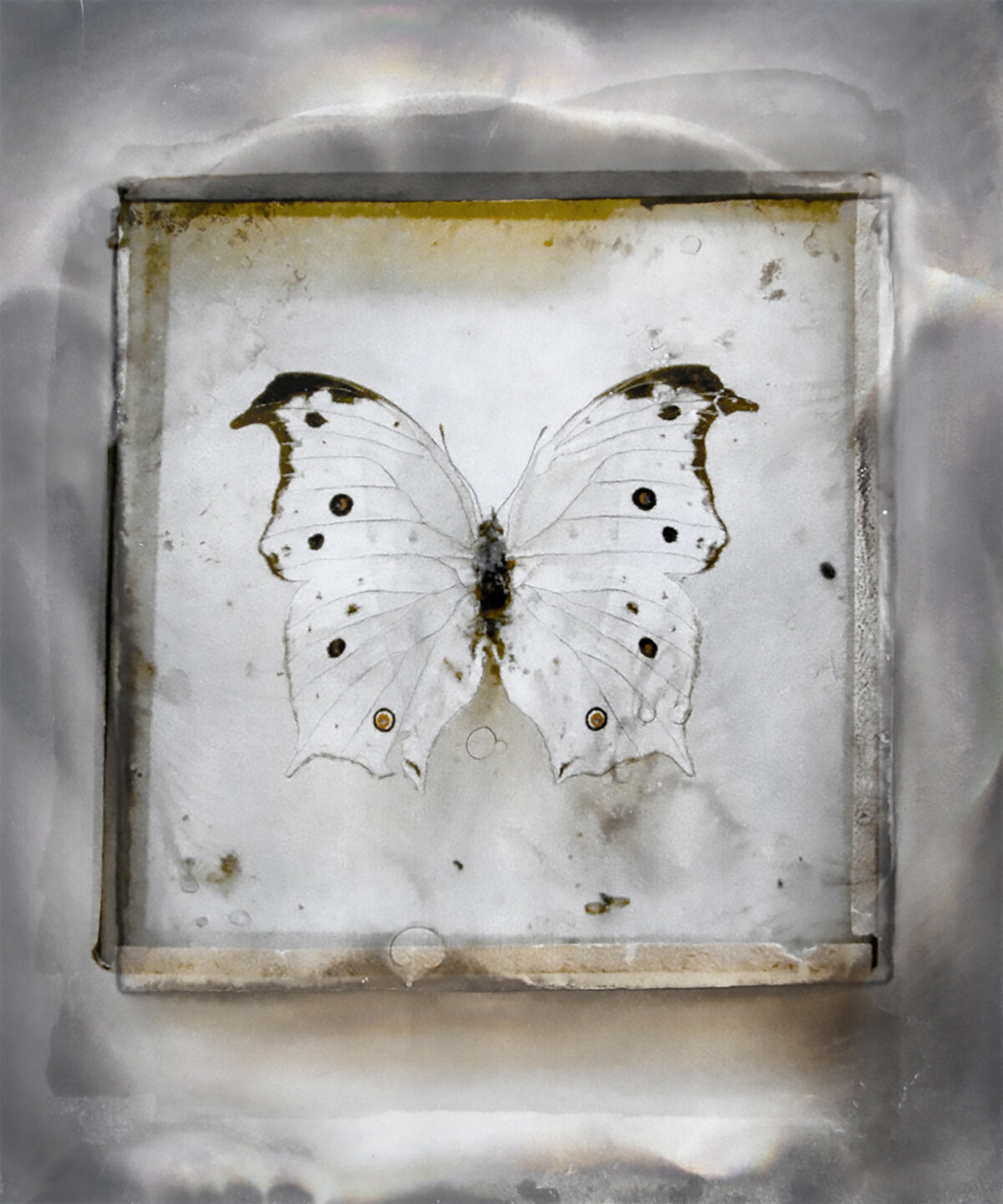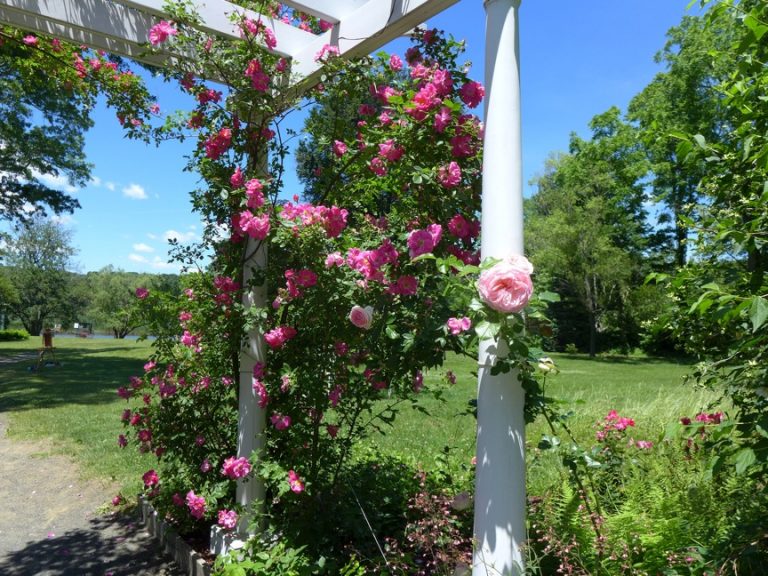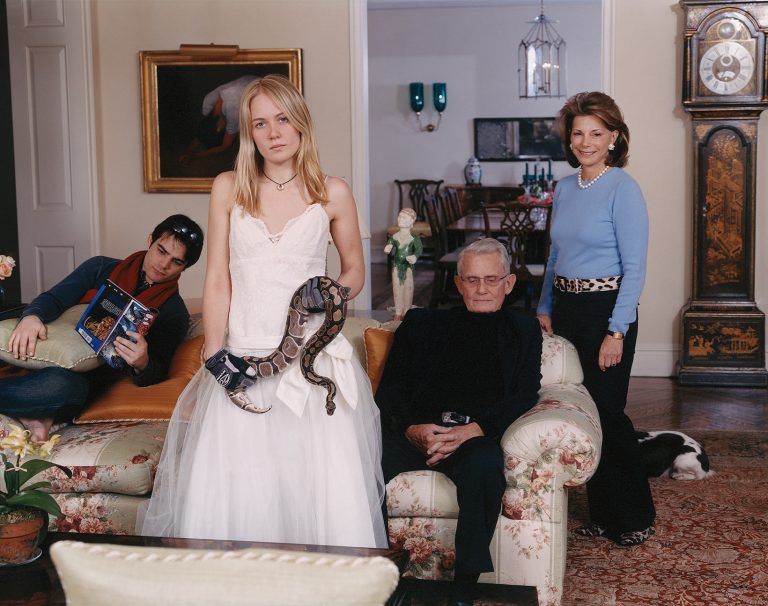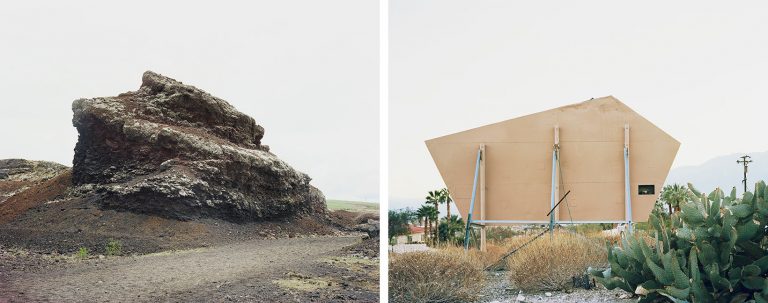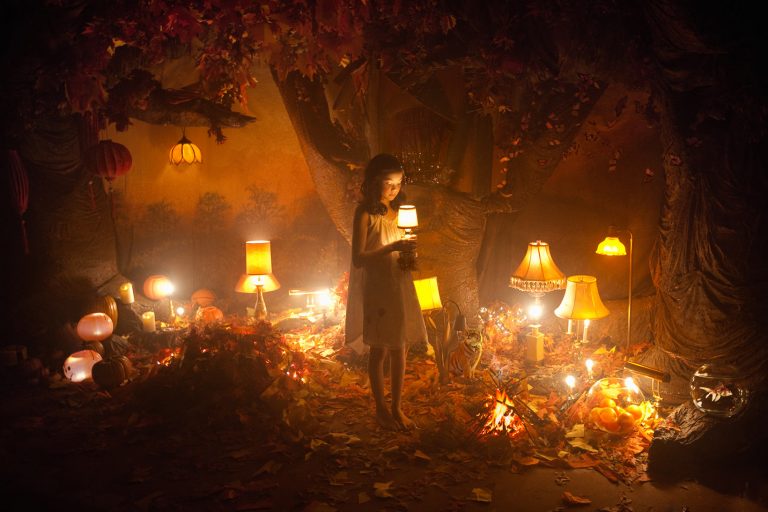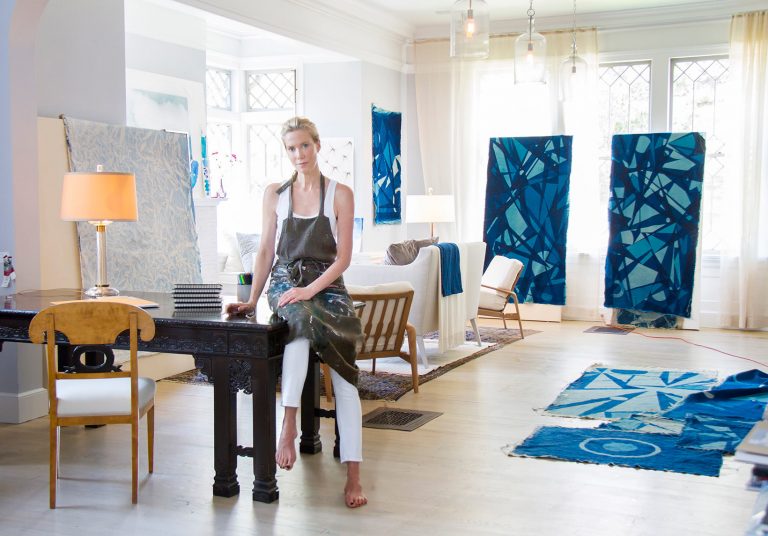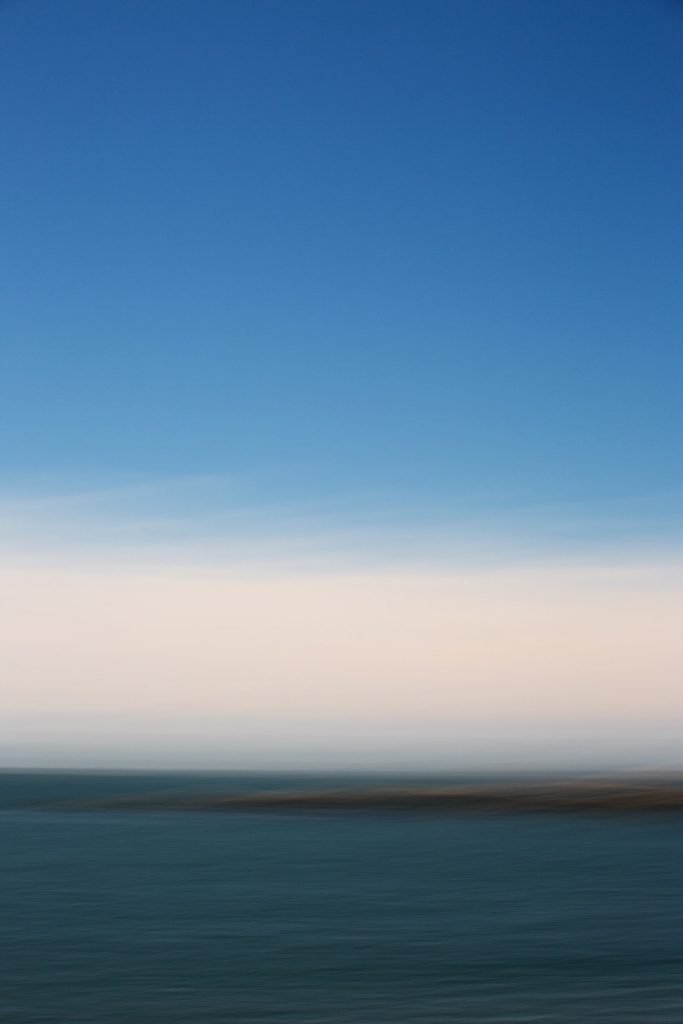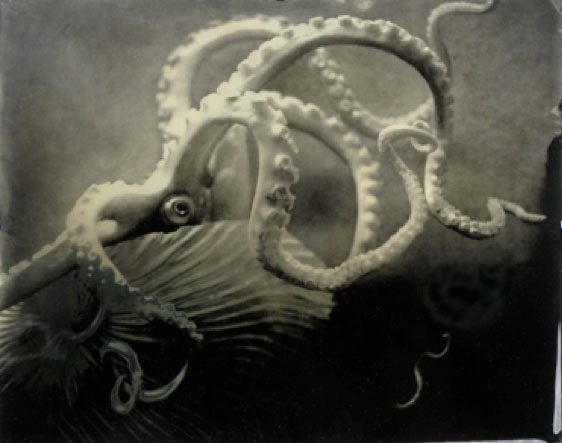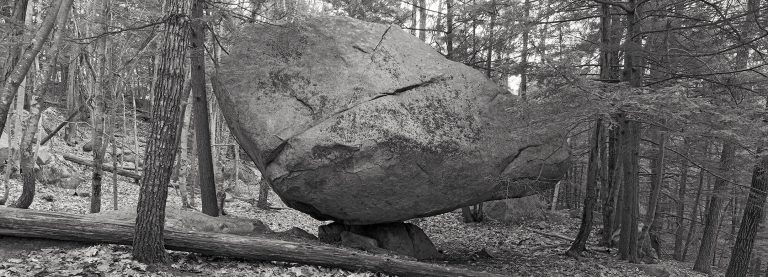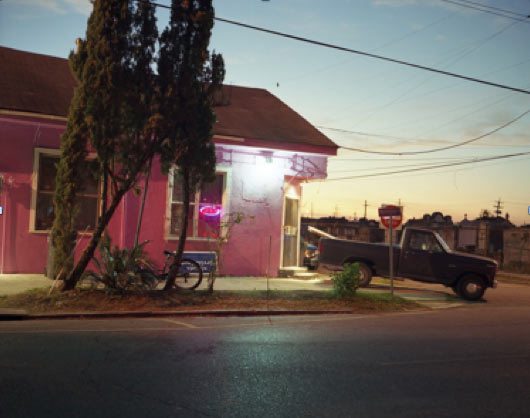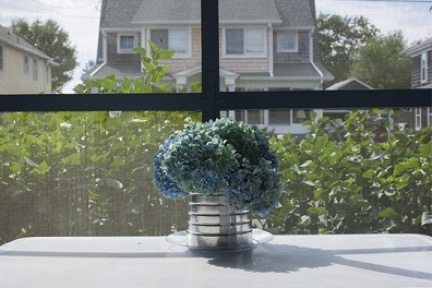In Place
Contemporary Photographers Envision a Museum
- Museum Hours: Tuesday through Sunday, 10am to 5pm
October 1, 2016 – January 29, 2017
Time and Nature
Abstraction and Connection
Houses and Stories
Share YOUR "My FloGris Moment"
Visitors of all ages are invited to find (and photograph) their “own” Florence Griswold Museum. In the spirit of the upcoming exhibition, we are asking our visitors to share their own distinct vision of the Museum.
Like the commissioned photographers, visitors can look inside and outside, find their quintessential Florence Griswold Museum moment, and capture it with a camera, smart phone, or tablet.
A selection of submissions will be shared digitally in the exhibition and on the Museum’s website.
Learn MoreTina Barney
That’s what I’m interested in—relationships, people, the way they move and the way they walk, the way a room is set up. The sociological. It’s like I have blinders on—I see the formal parts of putting a picture together, paired with the human figure, and human emotions. — Tina Barney
Barney’s photography career began in the mid 1970s while living in Sun Valley, Idaho. She began photographing in color with a large format view camera just before returning to New York in 1983. Her iconic tableaus portraying the daily life of the social elite are in the permanent collections of numerous institutions including the the Museum of Modern Art, the Whitney Museum of American Art, Los Angeles County Museum of Art, and the Museum of Fine Arts, Boston, among many others. Barney’s works were included in the 1987 Whitney Biennial, and recent solo exhibitions include The Europeans at the Frist Center in Nashville, TN and The Europeans at the Barbican Art Gallery, London, UK, which traveled to the Museum of Art, Salzburg, Austria.
For more information about Barney's workMarion Belanger
Seductively descriptive, the photograph references discrete facts of our world, and this to me is the allure of the medium. — Marion Belanger
Belanger’s work flirts with fact, knowing full well that the two dimensional plane of the photograph is an image, an object, a visual construction. The photographic archive becomes a collection of perceptions, a container of memory, and the images not unlike words in a poem: repetition, space, tone, color, and the sharpness of focus, all create meaning and provoke feeling. She photographs where the cultural and geologic landscapes intersect, and often entwine. Increasingly the differences between the wild and the contained, the fertile and the barren, and the natural and the artificial has become narrowed. The dichotomy (or lack of) creates a visual tension that questions the uneasy relationship between geologic force and the limits of human intervention.
Belanger’s Rift/Fault monograph, printed by Radius Books with an essay by Lucy Lippard will be available by early December.
For more information about Belanger's workAdrien Broom
I create worlds to tell the stories I need to tell. I build sets, both life size and miniature, and stage narrative scenes in them. Sometimes I’ll create entire alternative universes from scratch, while other times I’ll partner with the beautiful world that already surrounds us. — Adrien Broom
Broom is fascinated by the contrast between adult and childhood imagination and works to find balance between the two. Her work is created with hands and love, not Photoshop. Broom received a BA in Computer Animation from Northeastern University. She continued her studies in Italy, followed by a program in Fine and Decorative Art History at Christie’s in London.
From a series on daydreams to a study of the theme of envy in fairy tales, Broom creates worlds that allow her to tell stories that tap into emotion and fantasy. For In Place she began with a concept of shooting the Museum landscape, but was increasingly drawn to the powerful narrative associations of the Griswold House. As Broom describes, she “decided to use the house as my muse, and let the work unfold as I spent time inside this inspiring space.”
For more information about Broom's workKate Cordsen
My cyanotype abstractions dwell on surface, texture and process. When working in near or total darkness with fickle chemistry, one has no choice but to let go and allow the constituent materials to have their own life. I see my darkroom work as a collaboration with chance. — Kate Cordsen
Kate Cordsen is known for her large format ethereal landscapes. She uses a variety of photographic processes – often combining 19th century cyanotype and gum bichromate methods with traditional film and digital technologies – to extract both representational and abstract imagery. Deeply influenced by her time living in the Philippines and Japan as well as her training as an art historian specializing in Asian art, her work is meditative and multi-layered. Focusing on the ephemeral nature of life, her landscapes are imbued with the philosophy that the natural world has numinous, benevolent qualities and is a mirror of human emotions.
For the Museum, Cordsen is creating two new bodies of work that are a departure from her magical realist landscapes. Both series are cyanotypes and are directly inspired by the Museum’s permanent collection, specifically the early modernists. Through the formal language of geometric abstraction, Cordsen is further exploring the definition of the landscape.
For more information about Cordsen's workPeter Daitch
My work is a form of abstract expressionism. The subject matter varies from landscapes, flowers and trees, to city streets. My intention is to simplify the subject before me to its most natural elements of light, color and composition. The outcome is an image of bold color and gestural movement that allows for freedom of interpretation. — Peter Daitch
Daitch received his BFA in Photography from the University of Bridgeport. His most recent work focuses on unique abstracts and expressionistic landscapes taken from nature and the colorful world around us.
Living in Lyme, Connecticut with his family for over 20 years, many of his photographs were inspired and created in the Connecticut River Valley known for it’s natural beauty and light. His portfolio includes images from Brazil, Bahamas, Colorado and New England.
For more information about Daitch's workAlida Fish
At the core of my artistic efforts lies an urge that has existed since childhood: the desire to create a world of my own invention. For many years, I have used the camera and photographic process to bend reality. The impulse to populate and control an invented world has led to photographs of sculptures that appear to metamorphose into living flesh, portraits of plants and seeds, and shots of curious objects that catch my interest. — Alida Fish
Fish is the granddaughter of Clark Voorhees, one of the original Lyme Art Colony painters. Her work focuses on evoking realms of her own creation. She constructs stylized interpretations of botanical and natural specimens, bodies, art, and architectural fragments. Through a combination of handwork and digital and darkroom techniques, Fish suggests the pulsation and wonder of life in the world around us. While much of her earlier work is printed on photographic papers, for the past fifteen years she has preferred to use metal and a range of artists’ papers. Printed on metal, her images recall the earliest years of photography, when naturalist collections provided fodder for scientific and aesthetic experimentation.
For more information about Fish's workTed Hendrickson
The indications of time’s passage range from the subtle manifestations of geologic and climatic change to the more recent and observable impact of man. My photography, I have come to realize, has been about those changes. A museum is about time as well, collecting and exhibiting bits of the past and present, preserving them for the future, to inform, nourish and inspire. It seems to me that both are “time machines” so to speak, operating outside of science fiction and right under our noses. — Ted Hendrickson
During the past four decades, Ted Hendrickson’s photographs have explored the nature of landscape as image. Ranging from man-made scenes of the built environment to the wooded and coastal landscape that comprises what is left of “nature” in Southern New England, Hendrickson’s laconic personal views can be simultaneously poetic, comic, tragic, or mysterious. His work records layers of geologic and human history in a concise, straightforward style without overly injecting the drama of the picturesque or the clever abstractions of the camera’s frame.
For more information about Hendrickson's workSophie T. Lvoff
Most of my stories, it seems to me, could take place anywhere. Airplanes, rockets, choppers are also common themes in my photographs. I am drawn to the space race and aviation for their transitory nature. – Sophie T. Lvoff
Emerging photographer Sophie T. Lvoff signals the new and diverse directions in which the field is moving. Lvoff studied Photography and Philosophy at NYU’s Tisch School of the Arts before receiving an MFA from Tulane University in 2013. She works in film, video, and on curatorial projects, having completed a residency at Ecole du Magasin in Grenoble, France, in 2014-15. Lvoff’s documentary work has been compared to that of color photography pioneer William Eggleston, as well as Larry Sultan and Walker Evans. In her views of New Orleans’s streets or of less urban areas explored in series about salt mines and the landscape at night, she discerns the fine line between human intervention and nature’s subtle, mysterious qualities.
For more information about Lvoff's workJames Welling
When you take a piece of chalk and a piece of paper, no one is telling you what to do. But photography is so specific about what can be rendered. I think that specificity is something that I have always found exciting. — James Welling
One of the leading photographers working today, James Welling has played a significant part in redefining and expanding photography’s role in contemporary art. He has tested the limits of the medium with his embrace of digital techniques and has looked back to its roots, creating works that juxtapose and blur the boundaries between past and present, photography and sculpture, cultural and individual memory. Welling has completed several series that consider the homes and workspaces of American artists and architects he admires, including Andrew Wyeth and Philip Johnson.
James Welling has exhibited his work internationally, including at the Whitney Biennial and Documenta IX, and is the recipient of numerous prizes. In 2014, he was a recipient of the Infinity Award given by the International Center of Photography. His photographs are in the collections of major museums around the world.
For more information about Welling's workTom Zetterstrom
My affinity is for notable trees in native forests, and trees that were once defined by earlier agricultural landscapes of pastures and hedgerows. They are now rare to find, sadly abandoned, and often displaced and obliterated by invasive plants. — Tom Zetterstrom
Since the 1970s, Connecticut native Tom Zetterstrom has traced the impact of environmental change in photographs that consider the impact of sprawl against the strength and nobility of trees. Zetterstrom depicts the native habitats of his subjects as well as their change and adaptation across seasons and years. His work is represented in forty public collections, including the Florence Griswold Museum and has been exhibited at The Mint Museum, the J. Paul Getty Museum, and at the Iris and B. Gerald Cantor Gallery at Holy Cross, among others.
For more information about Zetterstrom's work









